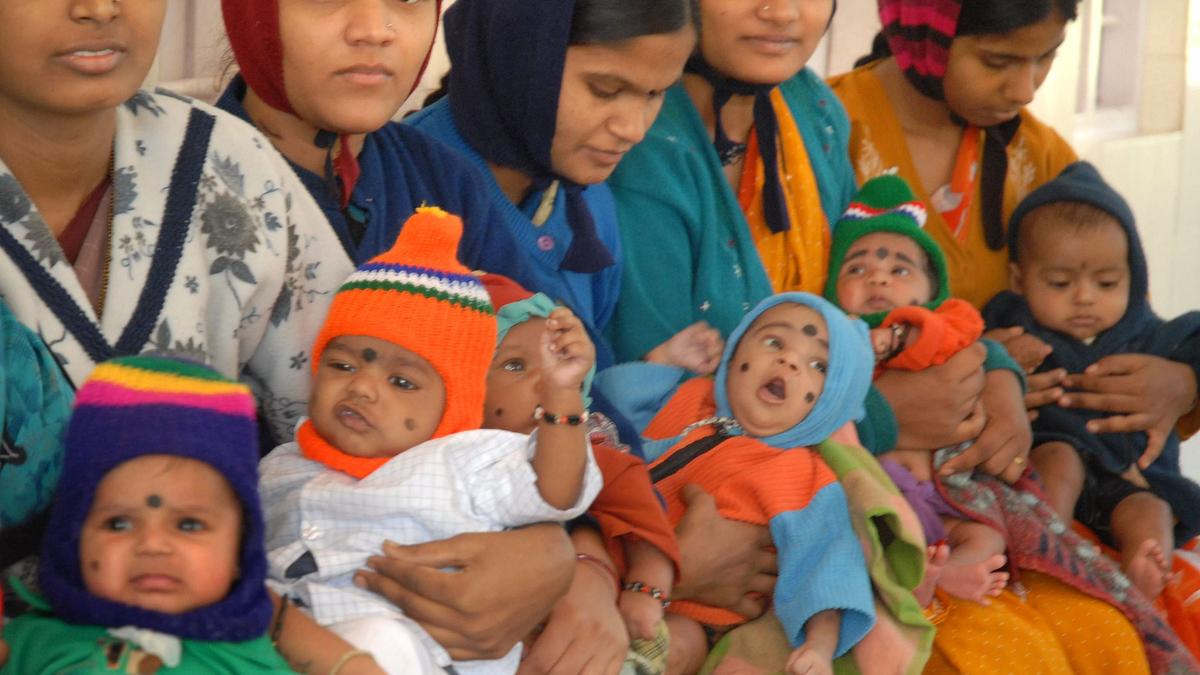Trends in Maternal Mortality 2000–2023

- 11 Apr 2025
In News:
A recent United Nations report titled ‘Trends in Maternal Mortality 2000–2023’, released by the Maternal Mortality Estimation Inter-Agency Group (MMEIG), highlights global progress and setbacks in maternal health. While acknowledging India's significant gains, the report places India second in global maternal deaths, behind Nigeria.
India’s Maternal Mortality Statistics (2023)
- Maternal deaths in India: 19,000(7.2% of global total)
- Rank: Second globally, tied with the Democratic Republic of Congo
- MMR: Reduced from 362 per 1 lakh live births (2000) to 80 in 2023 — a 78% decline
- Global average decline: 40% (2000–2023), but India achieved 86% decline
- Comparison with Nigeria:
- Nigeria: 75,000 deaths, contributing 28.7% of global maternal deaths
- India's Health Ministry deemed the comparison unfair given population differences (India: 145 crore, Nigeria: 23.26 crore)
Definition and Importance of MMR
According to WHO, Maternal Mortality Ratio (MMR) refers to:
“The death of a woman during pregnancy or within 42 days of termination, from pregnancy-related causes excluding accidental ones.”
MMR is a critical indicator for assessing healthcare quality and maternal well-being.
UN Global Findings
- Estimated maternal deaths globally (2023): 260,000
- Daily deaths: Over 700 women; about one death every two minutes
- Leading causes: Post-partum haemorrhage, hypertensive disorders, infections
- SDG 3.1 Target: Reduce MMR to <70 per 1 lakh live births by 2030
India-Specific Causes of Maternal Deaths
- Medical reasons:
- Post-partum haemorrhage
- Hypertensive disorders (e.g. pre-eclampsia)
- Infections related to pregnancy
- Co-morbidities: Anaemia, diabetes, hypertension
- Systemic challenges:
- Inadequate emergency obstetric care at Primary Health Centres (PHCs) and Community Health Centres (CHCs)
- Lack of infrastructure, trained personnel, and referral systems
- Socio-economic backwardness and poor access to healthcare in northern India
Concerns Highlighted in the Report
- Slowing progress post-2016 despite early improvements
- Humanitarian funding cuts impacting:
- Health worker retention
- Facility operations
- Availability of essential drugs (for haemorrhage, malaria, pre-eclampsia)
- Disruption in maternal care supply chains, especially in low-resource regions
India’s Stand
The Union Health Ministry has contested comparisons with smaller nations like Nigeria, asserting that India's maternal health progress is notable given its large population. The Ministry emphasized the 86% decline in MMR since 1990, as opposed to a global decline of 48% in the same period.
